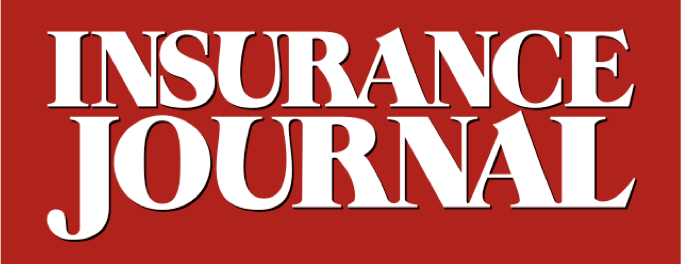The growing adoption of data-driven underwriting and predictive analytics has given delegated underwriting authority enterprises (DUAEs) a competitive advantage within the insurance industry, with technology serving as a cornerstone for many of these operations.
An AM Best survey of its rated carriers indicates that 70% of these respondents expect to increase the premium that is being generated through their respective DUAE channels, a prospect that bodes well for future growth. AM Best defines a DUAE as a third-party entity, such as a managing general agent, that is contractually appointed by an insurer or reinsurer to perform underwriting, claims handling and other administrative functions on behalf of their traditional carrier partners. (See related graphic below, sourced from AM Best’s Feb. 3 report, titled “.”)
Most recent DUAEs have an origin story that involves a technology role. These entities may deploy capacity more easily and can rapidly respond to market changes, as they are not burdened by the legacy systems that many insurers continue to grapple with.
Based on survey responses, more than 30% cited their top reasons for utilizing these relationships as gaining access to superior underwriting technology and also achieving speed to market.

This underscores both the vital role DUAEs are playing in the current market, and the strength of the niche relationships MGAs have developed with carriers.
Competitive Differentiator
Many DUAEs have automated routine processes such as quote generation, claims management, and policy issuance, which allows them to handle larger volumes with fewer resources while maintaining accuracy and consistency. Automation is a clear differentiator for DUAEs, especially in niche markets where speed and precision can be critical. Carriers partnering with DUAEs can benefit from lower operational costs and quicker turnaround times.
Predictive analytics and machine learning have also become essential for DUAEs aiming to refine their underwriting accuracy and gain deeper insights into their particular niche specialties. There is a growing reliance on real-time data and advanced modeling to assess and price risks.
However, for carriers, an understanding of advanced technologies such as machine learning and artificial intelligence is critical, as they need to be able to explain pricing and rates to regulators, which are increasingly scrutinizing algorithms for hidden biases.
The DUAE segment’s growing niche expertise is also aligned with the insurance industry’s growing demand for specialty products. As technological advancements and evolving market conditions give rise to more complex risks, DUAEs that can differentiate themselves through innovation and expertise will be better equipped to address these challenging and emerging risks.
Leveraging Data and Analytics
Underpinning the DUAE segment’s niche and versatility is its substantial and continued investment in technology. DUAEs leverage data and analytics to promote better risk selection, build differentiated programs, streamline operations, drive product development, and nimbly scale up and down in response to market changes. (The graphic below is sourced from AM Best’s report titled “Sustained Growth Potential for DUAE Market Segment”).

Many DUAEs operate on proprietary digital platforms and use data-driven placement strategies to drive underwriting and distribution efficiency, while equipping their partners with value-adding, cutting-edge risk assessment tools. The segment’s commitment to technological innovation has consistently attracted talent, funding, and strategic capacity.
As the DUAE market evolves, technology will remain at the forefront of its growth with operational advancements. By leveraging data and analytics, DUAEs can enhance underwriting accuracy, streamline operations, and introduce innovative insurance products that cater to emerging risks.
This commitment to technological integration not only positions DUAEs as agile players in the insurance ecosystem but also ensures their ability to adapt to a rapidly changing market landscape. Such programs can provide specialized underwriting and risk management services, and these factors can contribute positively to both the MGA’s and the insurer’s growth.
Problems can arise when an insurer that is only meeting minimal capitalization levels may also have an overly aggressive growth strategy and chooses to partner with an MGA on underwriting business, maybe even in catastrophe prone areas.
Our survey results strongly indicate that DUAEs have proven their importance to the insurance value chain — supporting our positive outlook for this segment.
Nearly 52% of respondents expect the DUAE segment to become more significant, while 48% expect it to stay the same. The survey results are consistent with AM Best’s view that the DUAE segment has established itself as an important part of the insurance industry’s value chain and will remain so.
Topics Carriers Underwriting
Was this article valuable?
Here are more articles you may enjoy.



 Mangrove, Another New Property Insurer, Enters Florida Market
Mangrove, Another New Property Insurer, Enters Florida Market  Diminished Value Not Covered by Standard Auto Policy, Massachusetts High Court Says
Diminished Value Not Covered by Standard Auto Policy, Massachusetts High Court Says  Fortress Targets $1 Billion for Latest Litigation Finance Fund
Fortress Targets $1 Billion for Latest Litigation Finance Fund  J&J Talc Deal Should Be Rejected in Bankruptcy, Holdouts Say
J&J Talc Deal Should Be Rejected in Bankruptcy, Holdouts Say 


